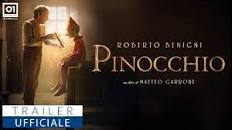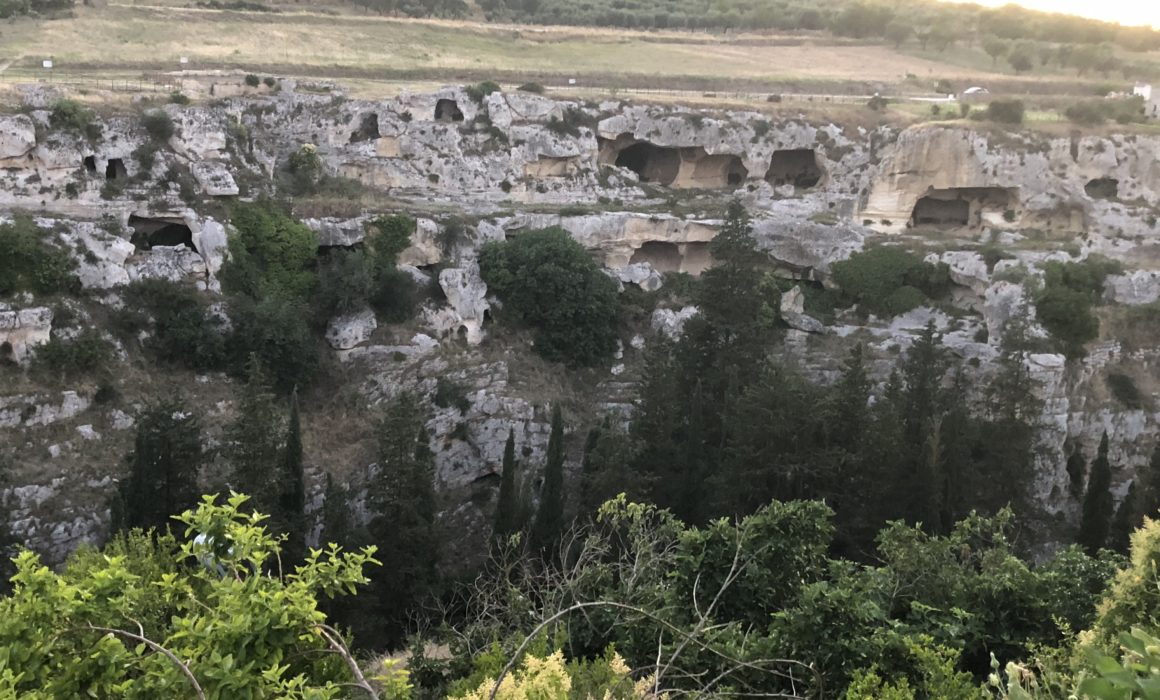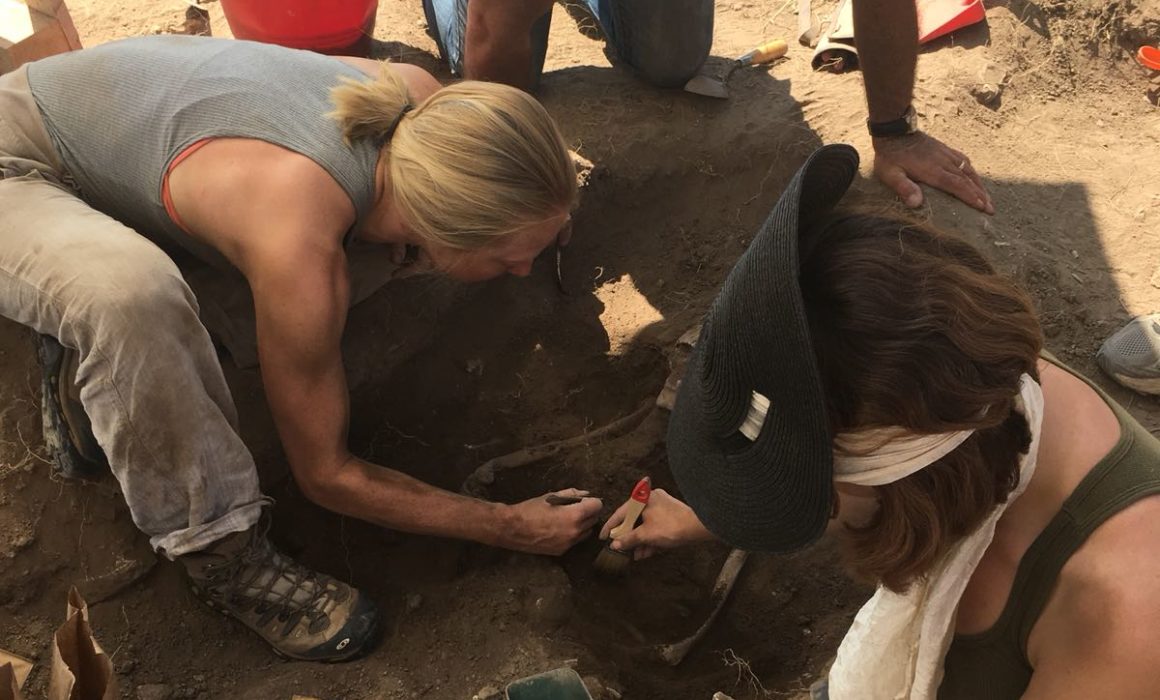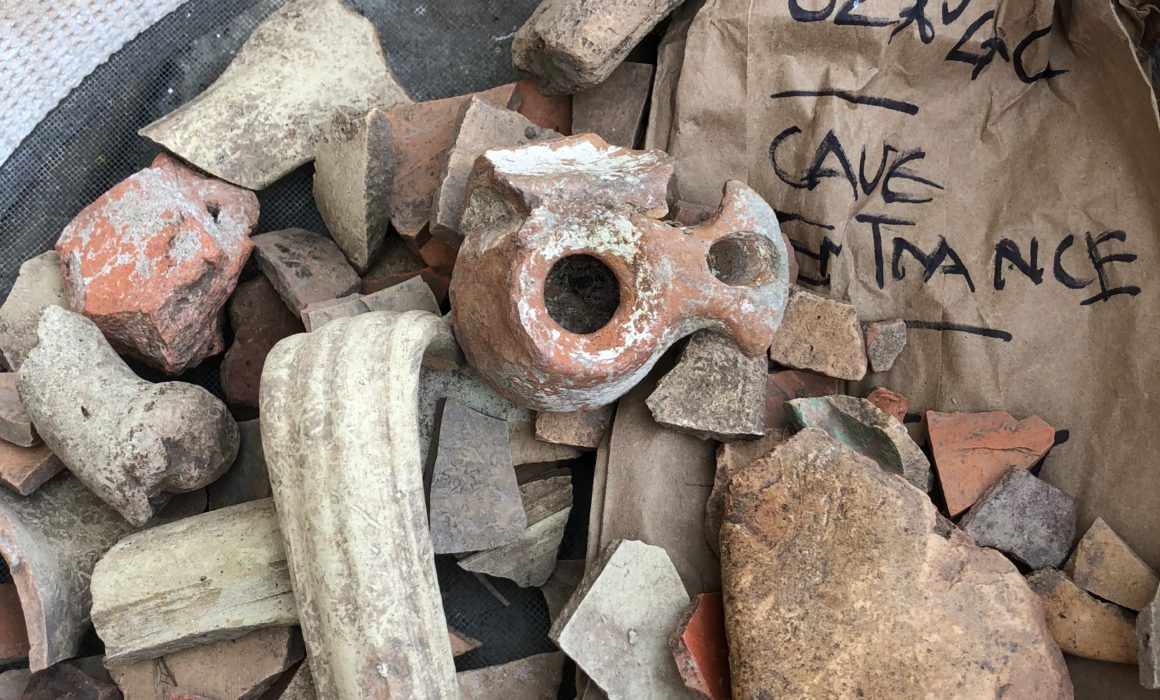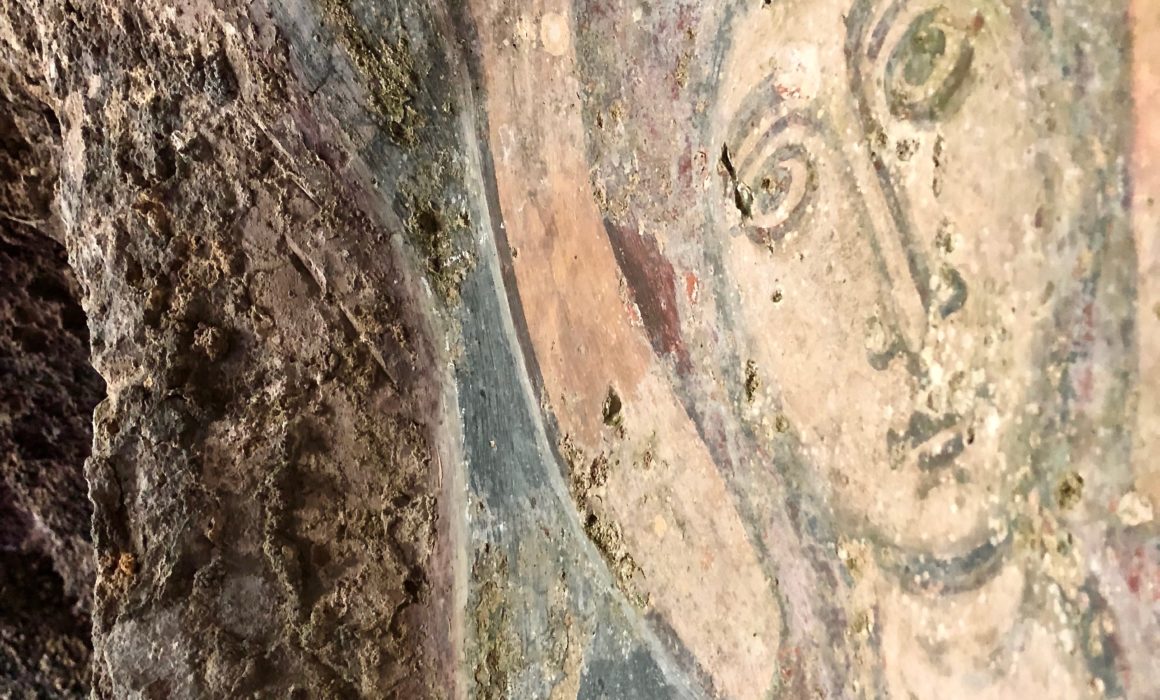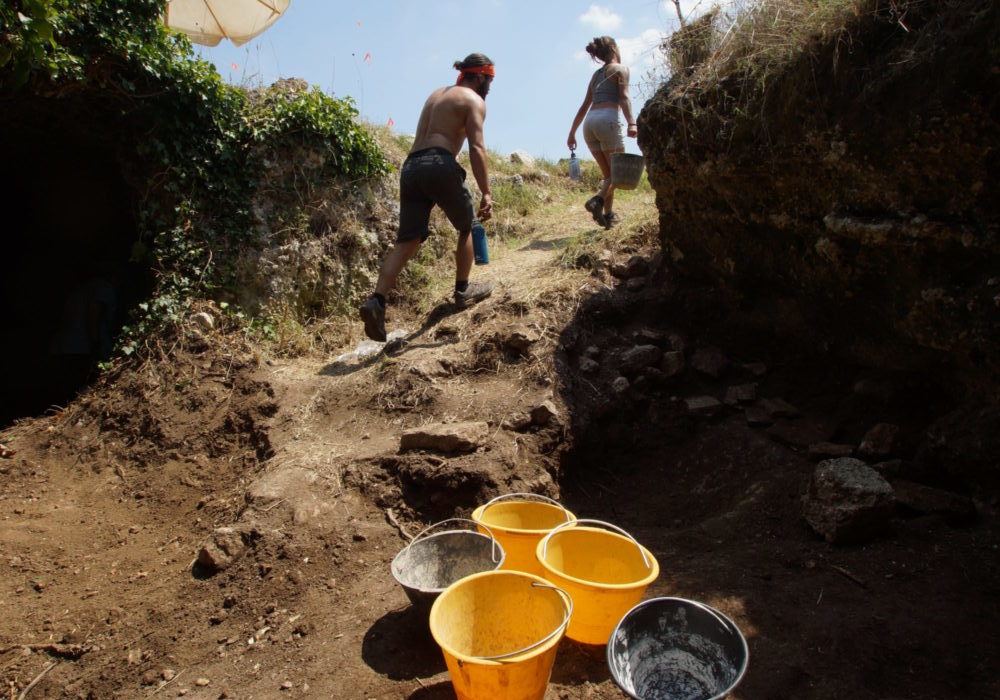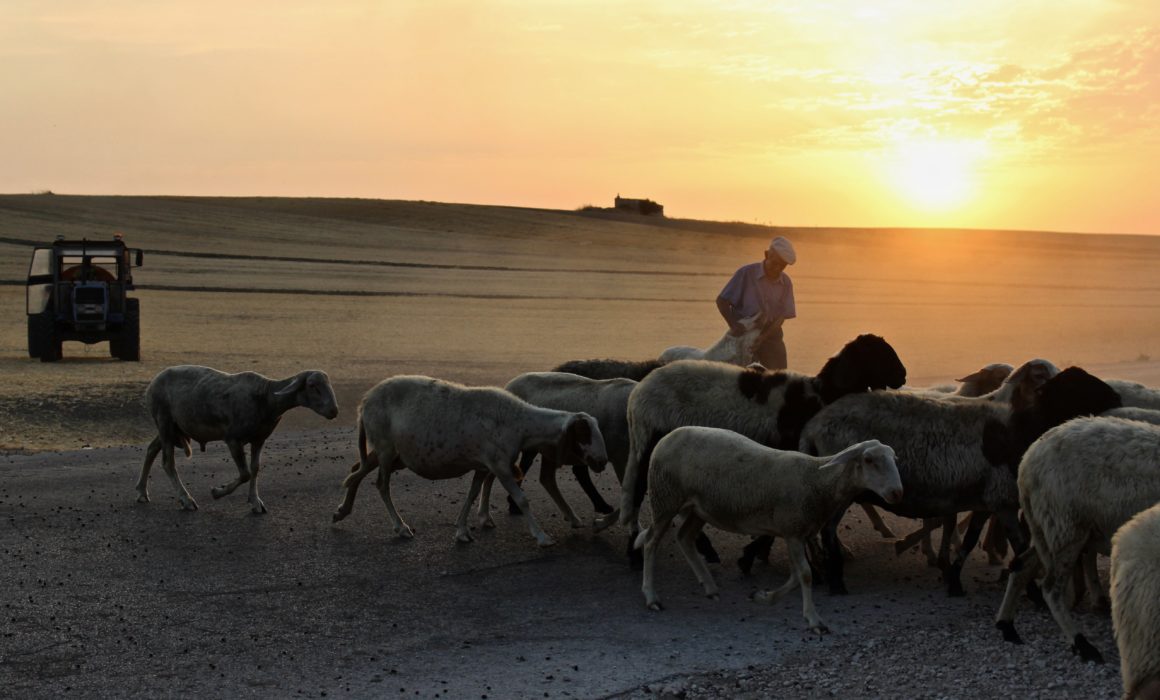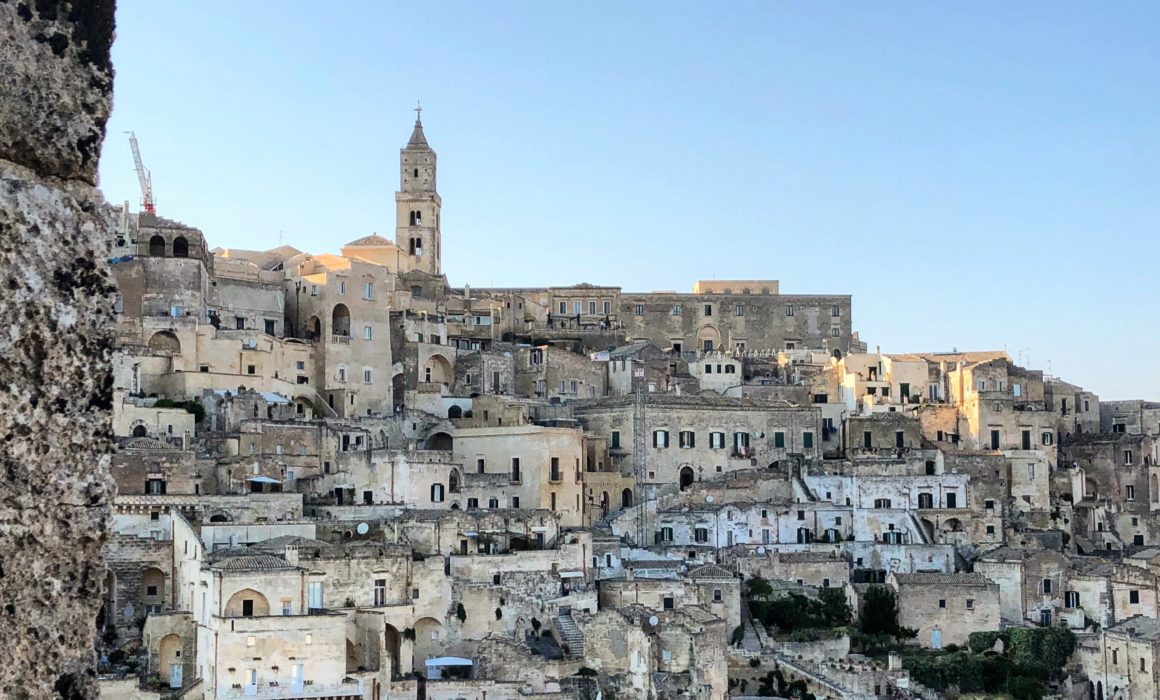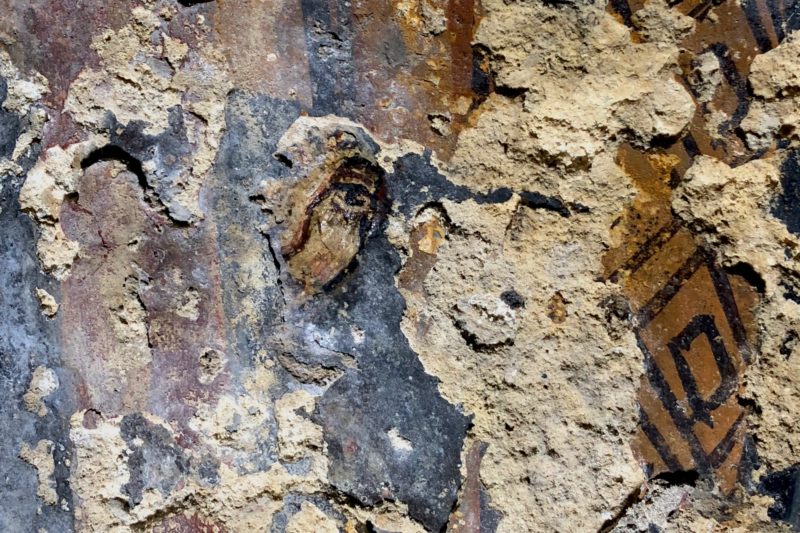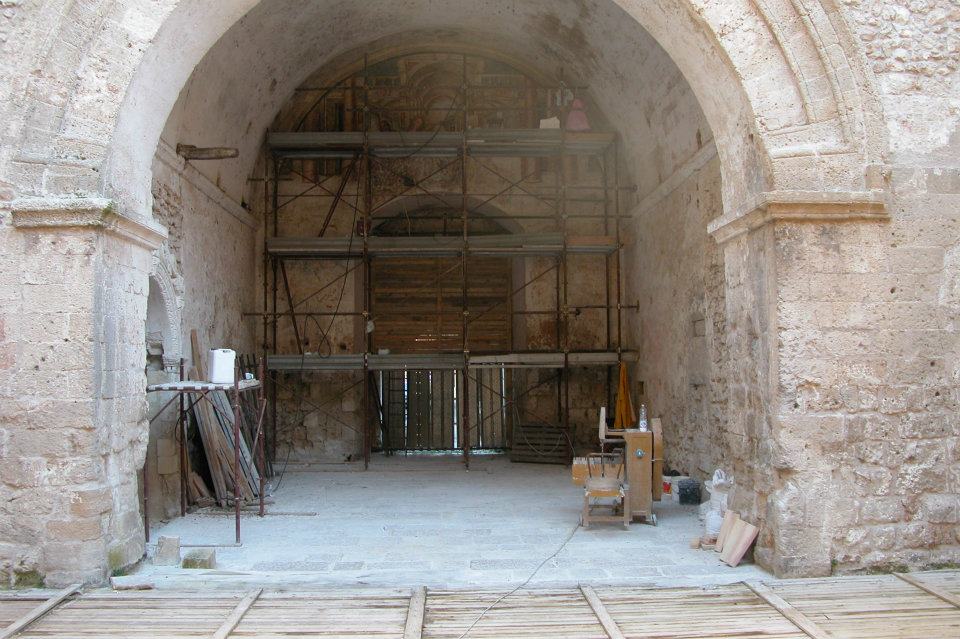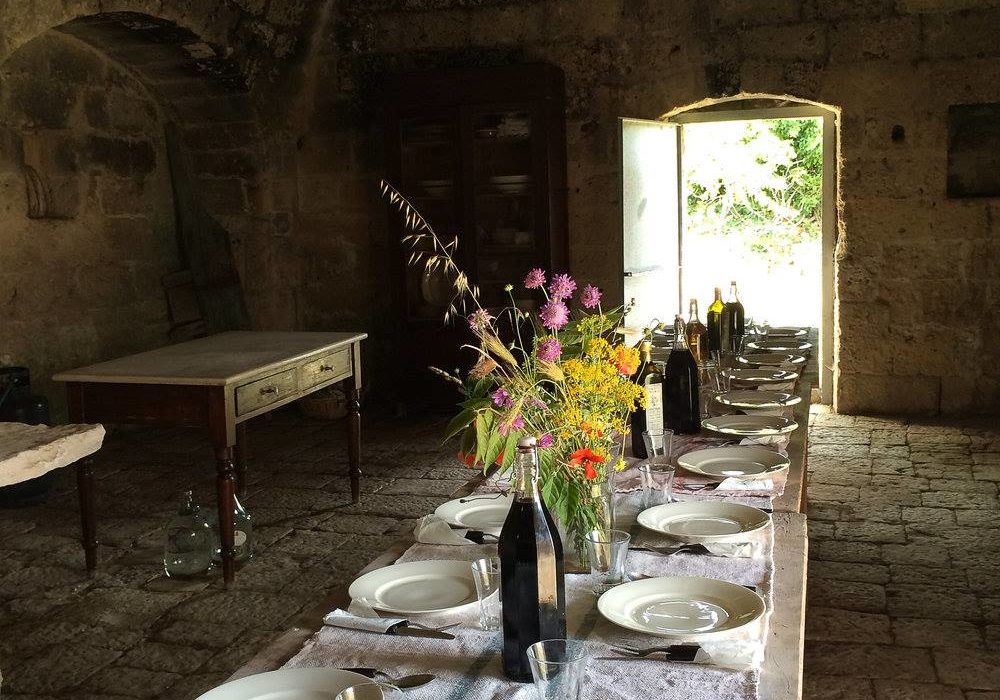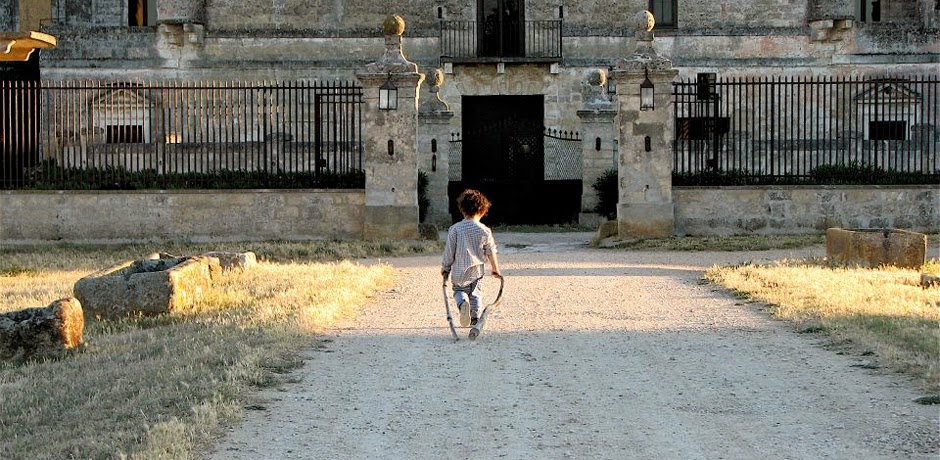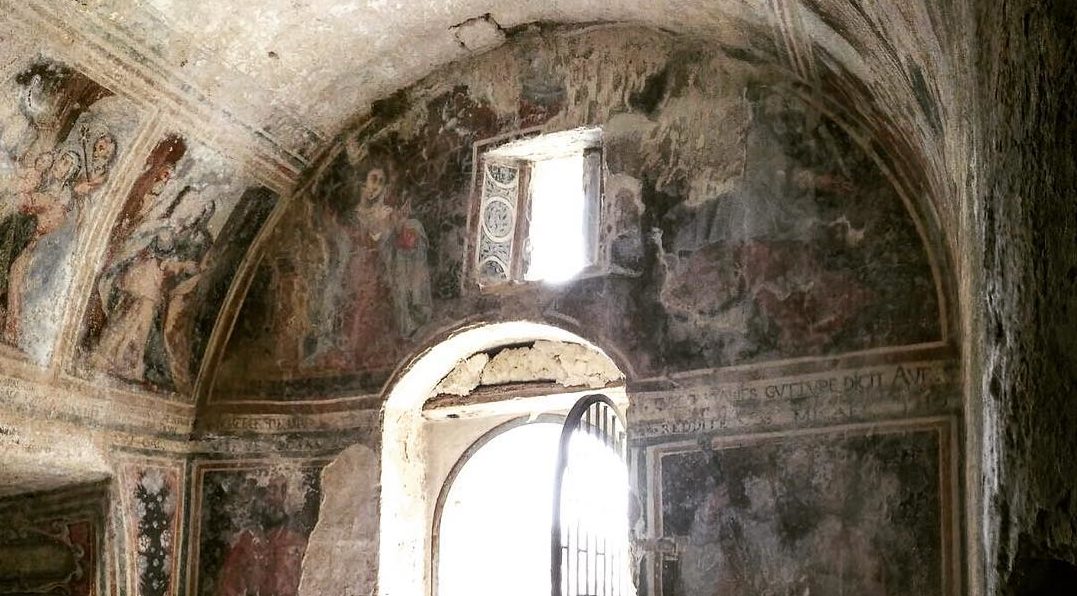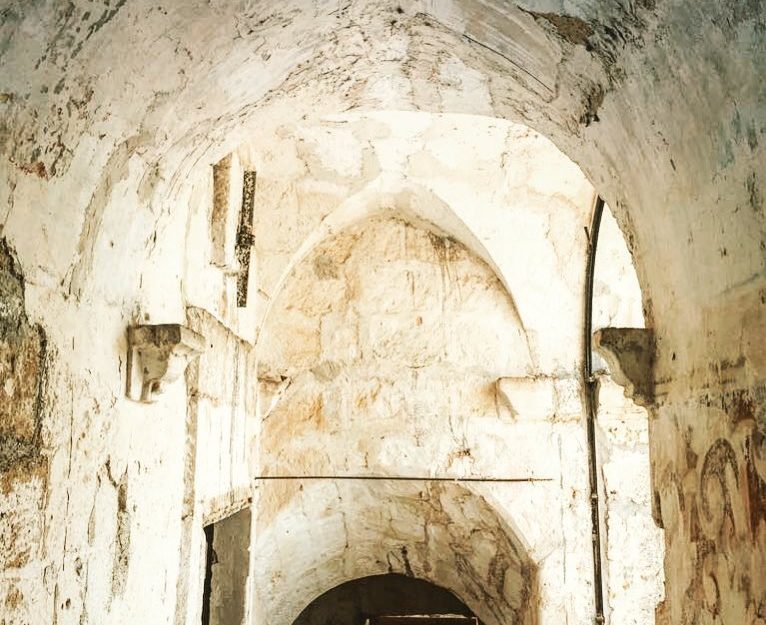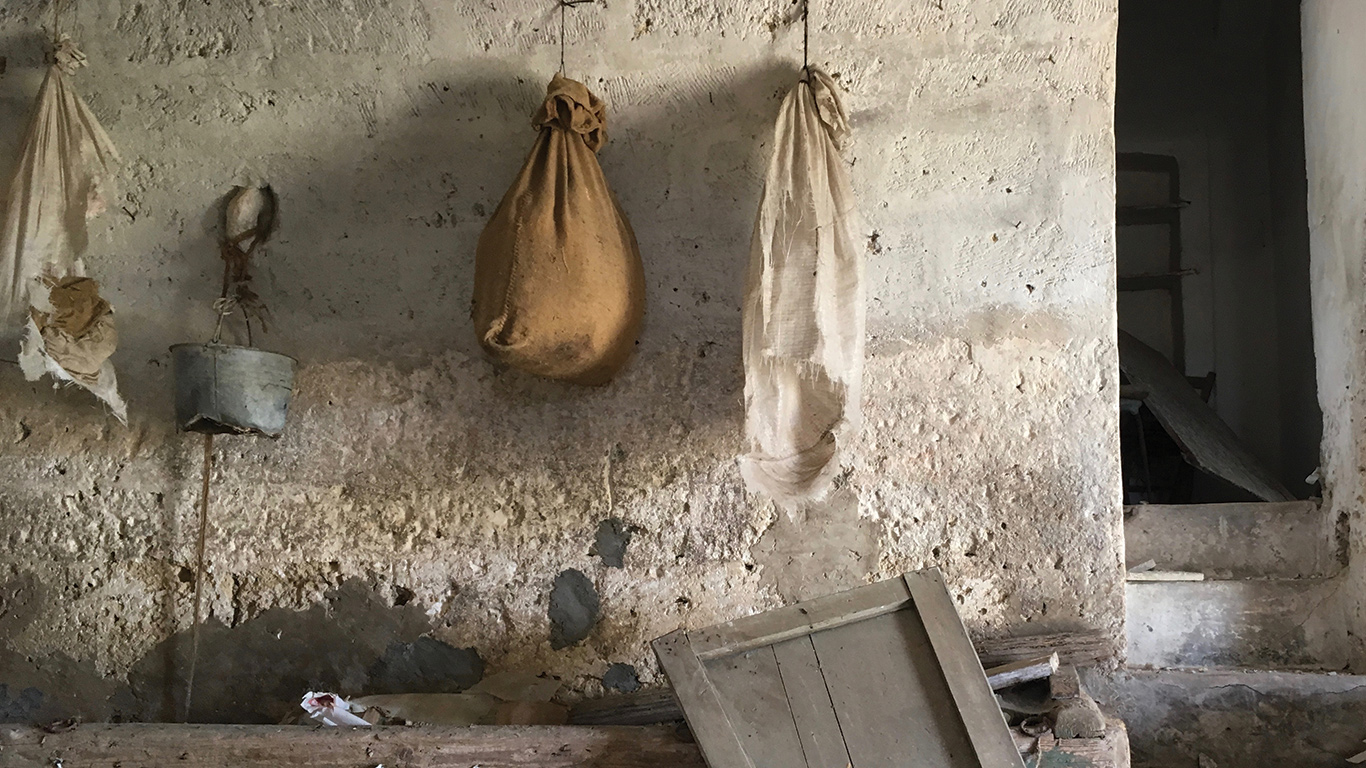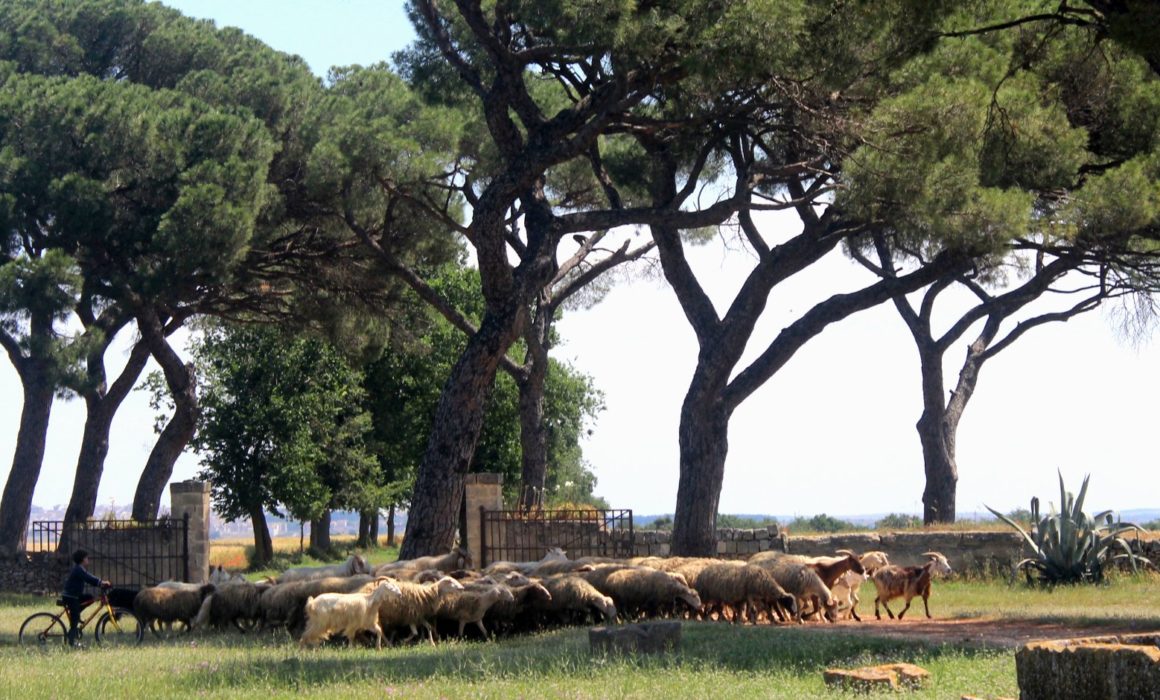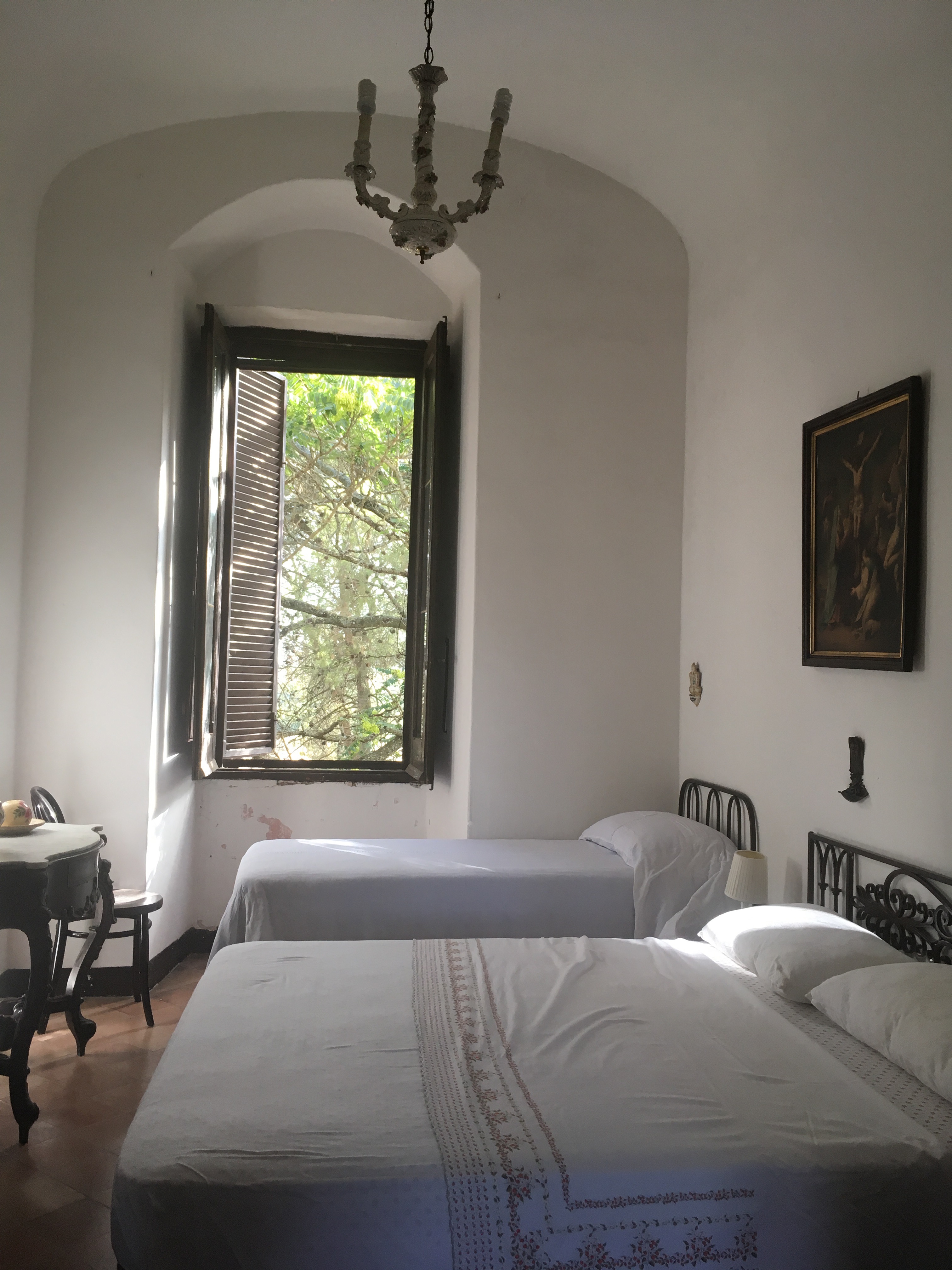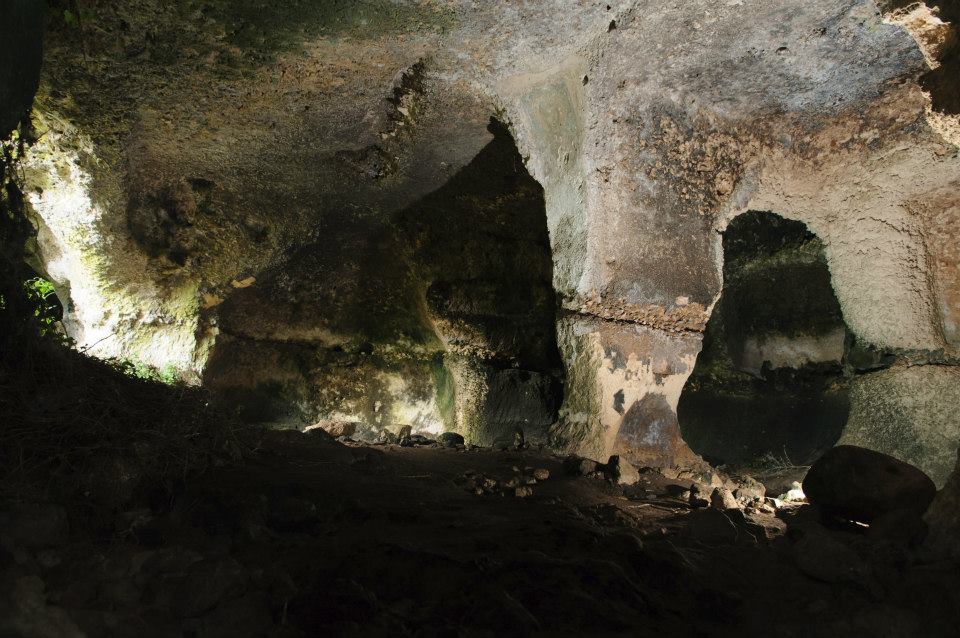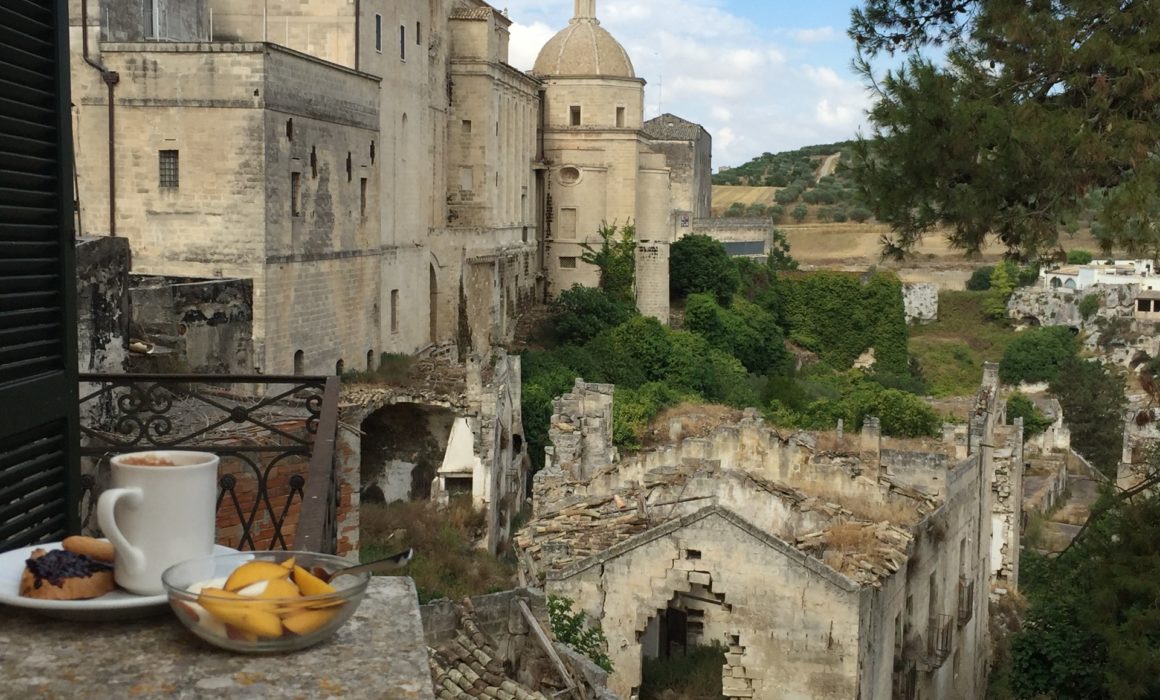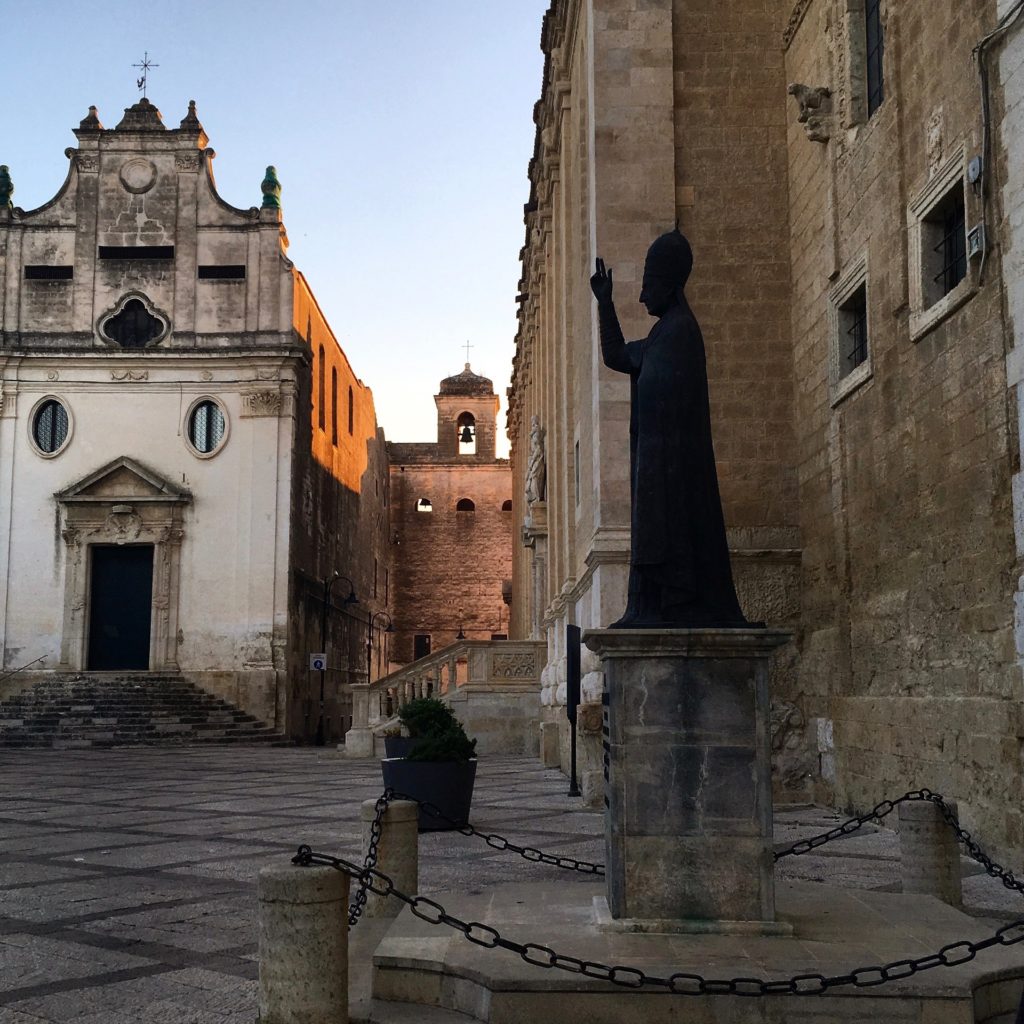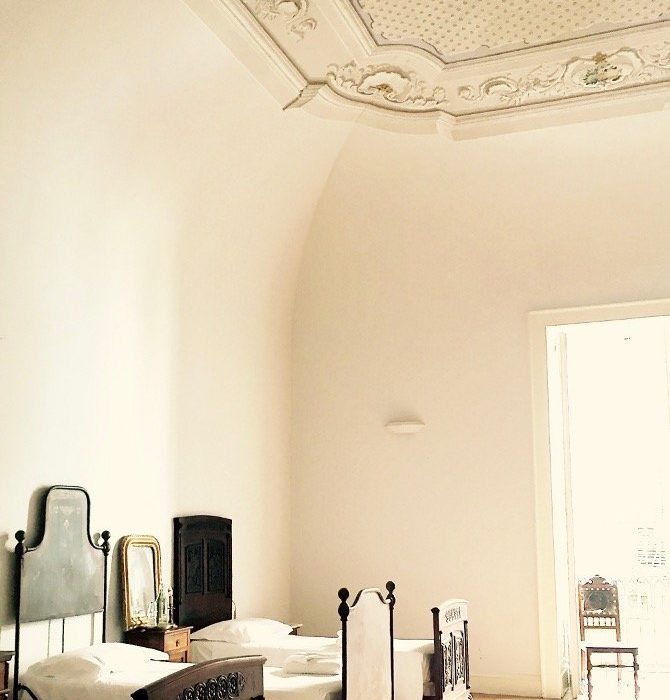Messors
Since its founding in 1989 under the tutelage of director Tonio Creanza, Messors has worked on a host of
preservation projects in the Puglia region in Italy covering archeological research, restoration projects on
frescoes, wood and stone statues, decorative painting, guided tours, educational field school projects and
study abroad university programs.
Puglia, which is situated in the heel of Italy right along the Adriatic coast, is a scenic, rather idyllic pocket of
land rife with history and nature. Reportedly home to 50 million olive trees, it is also lined with pomegrante
and plum trees, sunflowers, oaks and many underground caves and catacombs filled with Roman and
Byzantine heirlooms and frescoes. Singerie, an off-shoot of Messors, is a non-profit volunteer group that
was created in 1993 to work specifically on the revitalization of historic sites through the assistance of
governmental and museum backing. In the same year Sinergie proposed to the municipality of Altamura, a
project titled “Eutropia” to restore and promote an important historical-archeological site, Masseria Jesce,
once an ancient agricultural center and Roman filling station. The educational volunteer project ran from
1995 to 2009 and hosted over 700 volunteers coming from abroad to help and learn traditional stone wall
techniques of restoration. By 2009 70% of the site was restored and is now used by the community for arts
and culture events. The group also organizes excursions to the neighboring provinces of Matera, Gravina,
Pompei and many others in addition to an English summer school for children in La Selva.
Specific workshops such as art restoration, arts sojourn and culinary arts & shepherding are proferred under
the leadership of Messors. For a taste of true Mediterranean cuisine and the Slow Food Movement way of
life, the culinary workshop sheds light on cheese-making (mozarella, bocconcini, treccia, burrata, scamorza,
provolone, canestrato), charcuterie production, foraging wild, edible plants and herbs, olive oil extraction,
milking sheep and preparing homemade pasta – always finished off with an epic fish feast by the sea and a
two-hour siesta. The shepherding program involves waking before sunrise and following the shepherd’s
pastoral activities from dawn to dusk, a discipline which involves close contact to nature and long stretches
of solitude. All is held at the Masseria La Selva dairies, farms, restaurants, bakeries and wineries, all vital
culinary facilities maintaining regional culinary traditions.
Read on below for our interview with founder Tonio Creanza.
www.messors.com
Meet the Messors on Facebook
Southern Italy’s cultural heritage is a magnet for film directors.
King Frederick II and his caravans, Roman poet Horace, Roberto Benigni, the Coppolas, Levi, the cast & crew of James Bond 007 “No Time To Die, and countless other creatives have all flocked to southern Italy.
This past summer while we were restoring art in the studio and perfuming our noses with Murgian herbs as we ventured out with the shepherds, our field schools and towns of focus Matera and Gravina, found dual roles as protagonists in stories featuring modern-day action heroes and literary classics. Immediately recognizable is the light and stone architecture of the region, spectacularly spreads out across the screen in soon to be released films. The ancient preserved heritage hosts seemingly impossible James Bond stunts and car chases through its labyrinth of narrow streets and church steeples, and the iconic masserie is cast as a workshop where Roberto Benigni carves Pinocchio the mischievous marionette, an follows his adventures in the Pugilan fields. The locations and maybe even some faces will be easily identified by our art restoration course and food culture workshop participants and entice others yet to come.
Watch the trailer:
Pinocchio, director Matteo Garrone
No Time To Die – James bond 007, director Cary Joji Fukunaga
Letters from Fornello and the European cinema houses.
This past summer we continued towards the goal of preserving the 3rd-century site of Fornello, rebuilding its walls, searching for its stairs and stories to bring more light to the history of the site. In 2017 we began excavating for the hopes o finding the foundation of an above ground church mentioned in historical texts. Our archaeological investigations that year came up with little but we persevered this past summer with our dig at a lower level. Under the permissions from the Department of the Antiquities, during our excavation this past summer of 2018, we unearthed three burials from the medieval period. In the short 12 days, 14 participants were able to open up the entryway passage to the underground rupestrian cave Byzantine frescoed church readying it for construction of a support column, carved water drainage spouts for the 1700′ stone shepherds house, continued careful cleaning and study of the three layers of Frescoes dating from the 12th to the 14th century, and finally a door was hung on one of the smaller cave entrances. The small cave will have shelves installed to be available for local shepherds for laying the cheese. The skeletal remains were catalogued and given to the Gravina museum to be studied, and the soil collections surrounding the bowel area are being stored for future study to determine the diet and bacteria present during the period of their burial.
This summer 2019 Fornello preservation project workshop we welcome two students from the Canadian School of Restoration Arts- WILLOWBANK who were awarded scholarships. The funding for the Willowbank students to participate in our Fornello program was donated by an anonymous generous patron.
This is the third year we have partnered with Willowbank to reach shared goals of sustainable preservation and conservation of cultural heritage.
“Willowbank’s ecological approach represents a powerful response to today’s environmental and social challenges. Willowbank infuses the traditional methods of heritage conservation with a sense of obligation to recognize the interconnection of our built, natural and cultural resources. At Willowbank, we believe that places are richer for their diversity and we embrace this complexity. We believe heritage plays a pivotal role in creating a sustainable future.” from Willowbank”.
This summer 2019 the Fornello project will focus on stone wall building techniques, preparation for an architectural column, installing protective measures for the cave church entrance, archaeological excavations, and talks on sustainable conservation, and in conversation with at-risk shepherding communities and their practices.
Shepherds in the Cave – the documentary
The Canada Council for the Arts supported the documentary film by Director Anthony Grieco continued to show throughout the year at various film festivals.
The documentary won the International Jury Prize ‘Premio ArcheoVisiva’ in Sicily at the Rassegna del Documentario e della Comunicazione Archeologica Festival, and started 2019 as the audience favourite at the Florence at the ‘Firenze Archeofilm’ festival.
Fornello Sustainable Preservation Project
August 7th- 18th, 2019
Fieldwork, study, research and hands-on cultural landscape conservation and restoration.
Notes & Thoughts
by 2018 workshop participant Gigi Simeone on Philadelphia Inquirer
Personal Journey: In the boot of Italy, learning to restore frescoes.
A Place to Call Home. Making sense of Neptune, Shepherds, Caves and Calvino along the Appian Way.
From the invisible rupestrian cave dwellings, jazzi and majestic masserie to marble laid palazzos – Tonio Creanza’s Places and Spaces.
Writer Italo Calvino wrote of invisible cities imagined by the descriptions from Marco Polo’s explorations and fictitious conversations with Kublai Khan. Eutropia, one of the ‘citta invisibili’ is envisioned as a place of exchange: where a string of cities sprouts up over expanding plains; and where only one city is inhabited at any one time. This process is carried out in rotation by its citizenry whose professions, friends and homes are traded, so being that the inhabitants’ lives are constantly renewed with each rotation of space.
Calvino’s Eutropia, the Appia Antica, moveable feast dates, and southern Italy’s history of transhumance, all lend themselves to make sense of Cultural Heritage conservator Tonio Creanza’s life and the spaces he inhabits and collectively shares and restores with others. The cyclic motif of rotating spaces, whether restored, repurposed, cultivated or curated, has been a constant in Creanza’s journey. His passion for the land and its offerings, art and architecture set him on an orbital path in career of cultural and culinary heritage conservation. Creanza has called many places home; the hermit caves of Monte Gargano, an eight-month residency in Assisi while laying the tile pavers in the Papal Salon, a creative studio of sorts in Bernalda during the year he and colleague restorers spent revitalizing the decorative finishes at Francis Ford Coppola’s Palazzo Margherita, a masseria tucked amongst Mediterranean pines on the Murgian plains of Puglia, and a shepherds shelter- a living school housing pickaxes and cheese.
“At some point, you realize that Calvino is not talking about cities at all, not in the way we normally think of the word. Calvino’s cities — like all cities, really — are constructed not of steel and concrete but of ideas. Each city represents a thought experiment, or, as Polo tells Khan at one point, “You take delight not in a city’s seven or seventy wonders but in the answer it gives to a question of yours.” Eric Weiner NPR
Consistent with his 30-year history of enticing travellers to Puglia with his projects, Tonio grew up in the family orchards of olive, cherry, and almond located on the ancient trading route of the Via Appia, the Regina Viarum, which connects the gateway of Rome to the exotic outreaches of the Mediterranean sea. A perpetual feast of knowledge unfolded along the length of the Appia as it expanded over centuries, becoming an open house forum where travellers shared tables and traded knowledge about food cultivation and practices, art and architectural styles, gods, myths, languages, music and customs. This early social information highway was born over meals shared at stationes that dotted the Appian way, and like a travelling circus, their gatherings lit up the night sky, and by morning, their light was gone as they moved onward with their goods and stories.
The undulating tide of harvest, seasons and responsibility called Creanza back from his first travels abroad as a young man after only three months, when his absence from Olive harvest preparations caused alarm. Tonio returned knowing he would need to create a way in which he could bring the world to him – a modern day ‘Via Appia Forum- farm to table’, to his own Appian orchard.
So Tonio, his colleague and constant Giovanni Ragone, and Teresanna Loiodice embarked on the restoration of the ‘anchored stone ship’ of Jesce, a landlocked fortified Masseria whose story echoes the language of Marco Polo’s enlightened city of exchange- “Eutropia.” Masseria Jesce, listed on Roman maps as Sublupatia, is an agricultural and pastoral establishment rooted in a third-century Roman Appian way statio. Below ground – oyster shells, mudslides, obsidian, minerals, skeletal remains and Christian and Orthodox iconography are deposited as distinguishable layers providing a historical handbook for the site. Above-ground archaeological findings of a robust 3rd-century textile trade, Greek 5th-century pottery fragments, until its last residents of the mid-20th century who used the caves for their sheep. The pink limestone walls of the upstairs dining hall exhibit a fresco of the Roman water deity Neptune at its centre. Embedded in this parched and yellow steeped landscape, the fresh blue rendering of Neptune is an artistic detail that tells of Appian pilgrimages and seas crossed. The architectural and landscape restoration project of Jesce aptly named Project Eutropia ran for fifteen years and hosted seven hundred curious minds and hardworking hands to the site. While acting as a workshop site to learn heritage conservation arts and archaeology, the site was restored – the work done there equalling to three hundred fifty thousand Euro- thus avoiding the need for private or government funding to conserve the site. A sustainable model Tonio Creanza has sought to implement at each site that he works at with his workshop participants – Learning skills while restoring a vulnerable site.
Currently the historic masseria Jesce, is playing a role as a theatre and exhibition space for local and visiting artists and continues as one of Messors ‘living schools’ during the workshops.
The drive to seek unique spaces to live, restore, and house Creanza’s creative workshop participants has resulted in a series of above-ground and subterranean locations envisioned and operating as nomadic living schools and outdoor kitchens.
A city-owned abandoned 15th-century monastery renovated in the 1950s, which erased much of the structure’s character, was the first structure Tonio secured in his hometown of Altamura to host his international workshop participants during the Eutropia project. Although not ideal due to its simple dorm-style rooms, the monastery’s location in Altamura, a bordering olive grove, inner courtyard and remaining water well and church, convinced him to fund the re-roofing, making it a workshop home for 12 years.
A bumpy gravel road bordered by pine guardians builds anticipation as you pull through the stone piers and first catch sight of the majestic Masseria,- one of the few remaining that still functions as a farm and residence in the region.
Five white Maremmani, cane da pastore, rallied around Don Giacinto as he raised his cane in the air “Baeba you cant paint and live here alone!’ pointing to the Masseria. The masseria was originally built for Pope Orsini family of Gravina as hunting lodge and came into Don Giacinto’s family in 1917.
At the time the 84-year-old Don Giacinto was addressing Tonio’s soon to be wife Jennifer’s unbridled excitement that she unleashed out loud dreaming to live and paint in what she saw as a utopia. Don Giacinto’s gracious and giving invitation became a swift agreement that their upcoming harvest wedding would be held at the masseria. For several months Tonio and Jennifer cleared cobwebs, rehung the heavy iron shutters, aired out the sheep wool and corn husk mattresses, to ready the unoccupied masseria for their wedding which was scheduled the day before the Creanza family Vendemmia – grape harvest. For the following seven years the masseria was home to their Messors workshops and remains closest to their hearts.
Don Giacinto lived long enough to see the halls, courtyards and kitchen alive with laughter and heart as he had remembered it as a child. He met our son August who fed his stray cats, together they surveyed the property – Giacinto was apparently hard of hearing, but oddly not when August and he spoke in their own language of childhood.
A childhood dream of Creanza’s recently realized, arrived in the form as a parcel of land.
Fornello is a rural site made up of a Byzantine fresco cave, twelve additional cave dwellings, and evidence of a settlement dating back to the 3rd-century B.C.E has its own 3 thousand year history of undergoing a metamorphosis with each era. The ancient settlement includes a shepherd’s house that dates to the 1700s and dry-stone courtyards that outline a pre-existing sheep farm. The frescoes are comprised of three layers that date to 1100, 1200, and 1350. The fresco paintings document a link and a time in history when Byzantine communities spreading from the Balkans and fleeing persecution established themselves in Puglia in the rupestrian settlement. The Fornello site is currently being used as a living school during the workshops to learn landscape conservation, dry stone wall building, fresco restoration, archaeology, cheese making and cave cheese ageing, and site planning for rural water collection.
Messors goal for the site is to keep it vital and active by integrating the shepherding community and forming milk collectives for the eventual sale of the Fornello shepherds cheese.
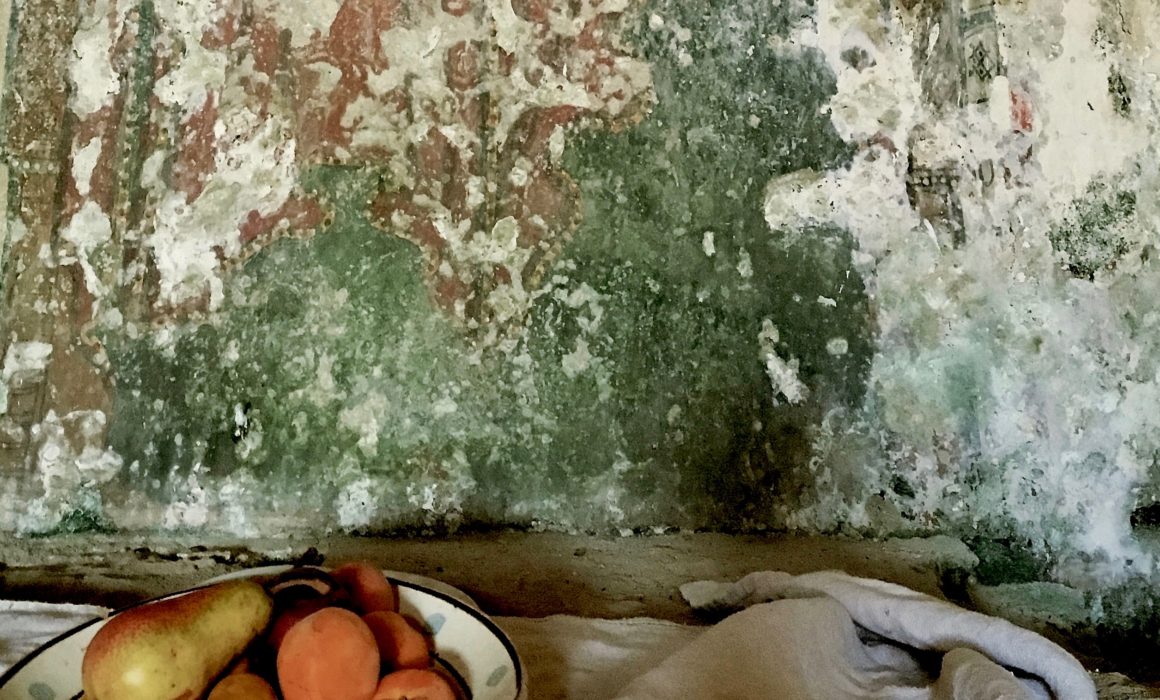 Messors home has been reinvented again moving itself to the edge of the Murgia, and has taken up summer residence in the small town of Gravina in Puglia in a 15th-century Palazzo. Gravina known to Appian travellers as Silvium carved from limestone sits on the abrupt edge of a ravine overlooking the countryside which Frederick II would have seen as his falcons’ recreation grounds. Rows of Olives trees climb up the hill towards the site of Botromango and cyprus trees rise straight up from a rock face that plummets down.
Messors home has been reinvented again moving itself to the edge of the Murgia, and has taken up summer residence in the small town of Gravina in Puglia in a 15th-century Palazzo. Gravina known to Appian travellers as Silvium carved from limestone sits on the abrupt edge of a ravine overlooking the countryside which Frederick II would have seen as his falcons’ recreation grounds. Rows of Olives trees climb up the hill towards the site of Botromango and cyprus trees rise straight up from a rock face that plummets down.
After seeing many possible sites for Messors new home base, a Gravina local helped Tonio scout the location of the Palazzo. Tonio and Jennifer were excited by the cathedral ceilings, cool marble halls, decoratively painted ceilings and wrought iron terraces. They furnished the generously proportioned rooms with found and foraged antiques they bought in the months leading up to moving in with rustic antiques from Italy and France. Last summer a jovial monk was more than happy to donate a room at the monastery to be used as Messors painting restoration studio and this year the studio will be housed at the Gravina Museum. The palazzo kitchen, breakfast room and dining room which can seat 50 for a memorable feast or a quiet meal of cheese, bread and verdeca made on the vineyards on the hill, is the connecting thread to the other Palazzo rooms.
As if to tempt or torment Tonio, the palazzo overlooks the crumbling abandoned buildings of the historic centre; a playground for his imagination, a project ripe for a visionary to imagine an alternative reality for this outcast architecture.
* These spaces- buildings, caves, houses and fields have been shared and collectively preserved and restored with the participation of 1470 people who made the projects and southern Italy part of their journey
*Tonio Creanza is an Art & Cultural Heritage Restorer and the Founder & Director of Messors – Art, Cultural Heritage and Culinary Educational workshops. Tonio Creanza is a 6th generation Olive oil and wheat producer and teaches about Olive Oil. The workshops run each summer in southern Italy- you can contact messors.com for details. Olive Harvest exchanges happen late November. Part of the year Tonio is in Vancouver Canada in his new old wooden clapboard heritage house where he runs Olive oil education sessions and provides the community with his Family Olive Oil.
*Giovanni Ragone has his Doctorate in Agronomy and is the Co-Founder and Co-Director of the Messors Fornello Cave Project. Giovanni led the group that discovered the Neanderthal fossil skeleton ‘Uomo di Altamura’- ‘Altamura Man’.
Incredible work carried out by botanist/conservator Paolo Belloni at his conservatory I Giardini di Pomona, Puglia, Italy. Hundreds of rare and ancient varietals of fruit trees have been conserved to ensure abundance of flavors and taste to future generations.
Through our workshops and projects, we want to share our passion, knowledge, and connection with our native land of Puglia.
Our authentic stimulating experiences give insight to the people and their culture, history, food, and archeological and artistic treasures.
We are located in the heel of Italy that for centuries has embodied the idea of travelers and trades. A thirsty land characterized by roughly hewn labyrinths of dry stone walls, groves of centenarian olive trees, subterranean worlds of Byzantine frescoes, shepherds, and both rural and flamboyant architecture that today, narrate centuries of neolithic man to modern days.

